Goga
Banned
- Messages
- 2,651
- Reaction score
- 152
- Points
- 0
- Y-DNA haplogroup
- R1a*
- mtDNA haplogroup
- HV1b2
My question is who were the Parthians?
Parthians were ARYAN people and this was the Parthians Empire. Parthians were the main competitors of the Roman Empire in the EAST. And mighty Romans fought many battles against the Parthians.

More about the Empire of the Parthians: https://en.wikipedia.org/wiki/Parthian_Empire
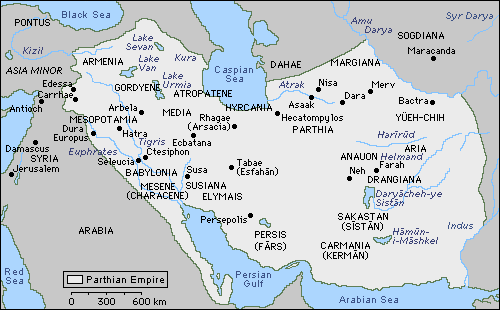

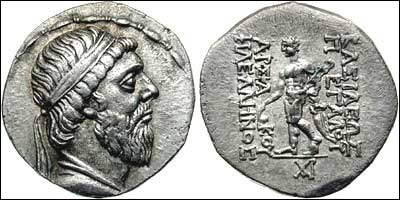
Mithridates I of Parthia, 171-139 BCE


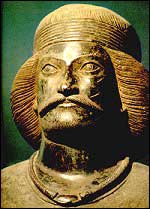
http://www.iranchamber.com/history/parthians/parthians.php
Parthian army:


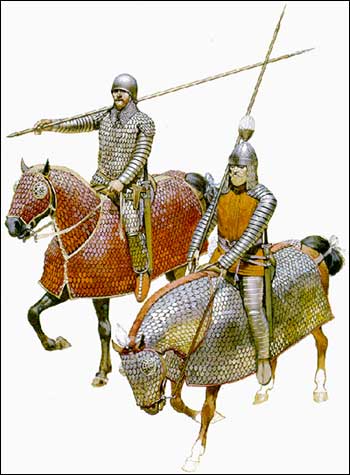


" A sculpted head (broken off from a larger statue) of a Parthian soldier wearing a Hellenistic-style helmet, from the Parthian royal residence and necropolis of Nisa, Turkmenistan, 2nd century BC " https://en.wikipedia.org/wiki/Roman–Parthian_Wars
 Mithradates I the Great, 165 BCE–132 BCE
Mithradates I the Great, 165 BCE–132 BCE
http://www.livius.org/pictures/a/iranian-royal-portraits/mithradates-i-coin/

Arsaces I, 247 BCE–211 BCE
http://www.livius.org/pictures/a/iranian-royal-portraits/arsaces-i/
 Head of a Parthian
Head of a Parthian
http://www.livius.org/pictures/a/iran/parthian/
http://www.livius.org/articles/misc/parthian-empire/
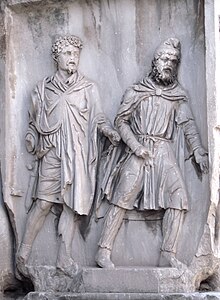
The problem is that the historical region of the Parthians is located in north-eastern Iran. But Parthians spoke a WEST Iranian language, close to Kurdish dialect of Pehlewani or "Pahlawânik" group. https://en.wikipedia.org/wiki/Southern_Kurdish
Many people say that South Kurdish dialects were spoken by the Parthians. HOW??
So, my question is who were those Parthians? Were they West or East Iranians. As far as I know after the Medes, the Parthians came into the existense in Kurdistan. The Medes were West Iranian (ARYAN) people. Also Kurds are WEST Iranian people.
If the original homeland of the Parthians was eastern Iran, why did they speak a WEST Iranian (ARYAN) language, actually a southern dialect of Kurdish?
Parthians were ARYAN people and this was the Parthians Empire. Parthians were the main competitors of the Roman Empire in the EAST. And mighty Romans fought many battles against the Parthians.

More about the Empire of the Parthians: https://en.wikipedia.org/wiki/Parthian_Empire



Mithridates I of Parthia, 171-139 BCE



http://www.iranchamber.com/history/parthians/parthians.php
Parthian army:





" A sculpted head (broken off from a larger statue) of a Parthian soldier wearing a Hellenistic-style helmet, from the Parthian royal residence and necropolis of Nisa, Turkmenistan, 2nd century BC " https://en.wikipedia.org/wiki/Roman–Parthian_Wars

http://www.livius.org/pictures/a/iranian-royal-portraits/mithradates-i-coin/

Arsaces I, 247 BCE–211 BCE
http://www.livius.org/pictures/a/iranian-royal-portraits/arsaces-i/

http://www.livius.org/pictures/a/iran/parthian/
http://www.livius.org/articles/misc/parthian-empire/

The problem is that the historical region of the Parthians is located in north-eastern Iran. But Parthians spoke a WEST Iranian language, close to Kurdish dialect of Pehlewani or "Pahlawânik" group. https://en.wikipedia.org/wiki/Southern_Kurdish
Many people say that South Kurdish dialects were spoken by the Parthians. HOW??
So, my question is who were those Parthians? Were they West or East Iranians. As far as I know after the Medes, the Parthians came into the existense in Kurdistan. The Medes were West Iranian (ARYAN) people. Also Kurds are WEST Iranian people.
If the original homeland of the Parthians was eastern Iran, why did they speak a WEST Iranian (ARYAN) language, actually a southern dialect of Kurdish?
Last edited:




















